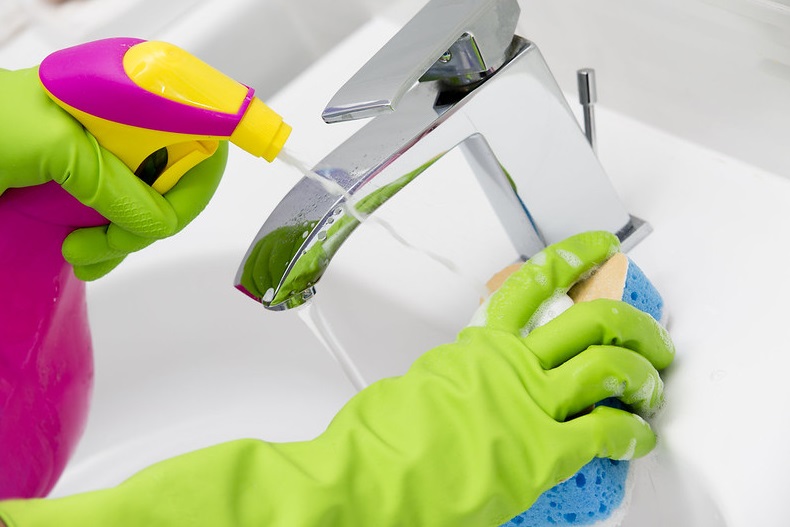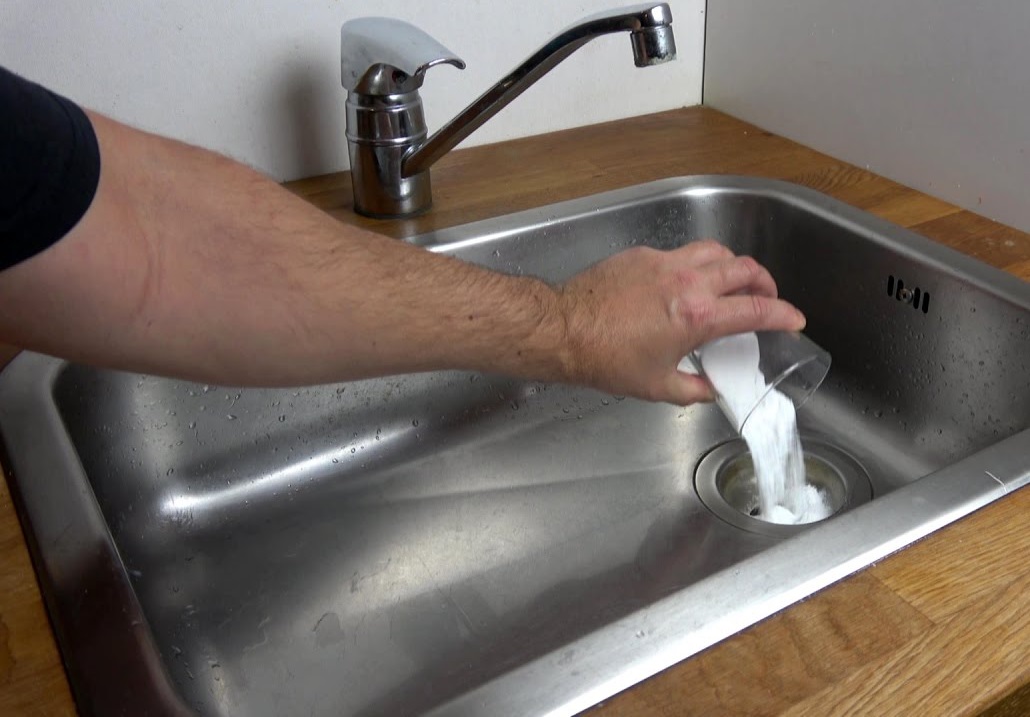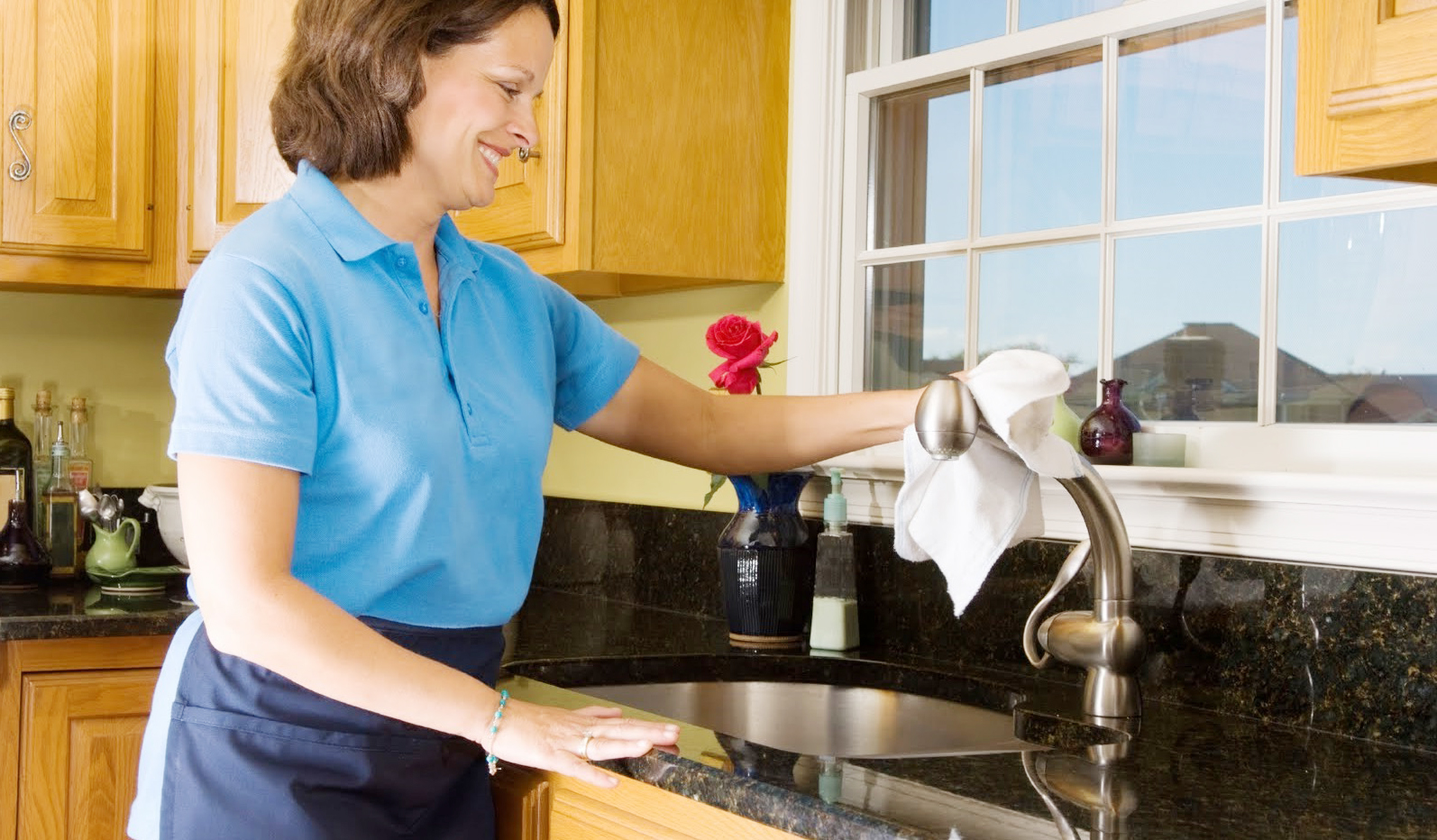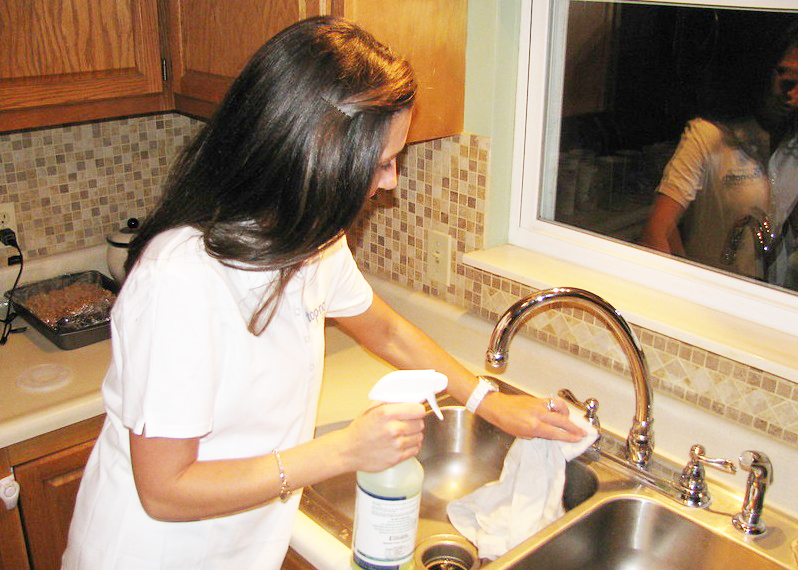How to Make your Kitchen Sink Shine
Table of Contents
Cleaning Tips For Your Kitchen Sink
The kitchen is the house’s heart and soul. It is where your culinary abilities come to life, making it possible to prepare nutritious meals for your entire family. However, the unappealing and intimidating chore of cleaning up keeps most people away from the kitchen.
Maintaining a clean kitchen can be a daunting task. Kitchen chores such as cleaning your kitchen sink, drain and other things are not as fun as cooking and leave you frustrated, especially if you have to do them daily. So, to keep your kitchen sink and drains clean, we have compiled some really simple cleaning tips and methods for you. To learn more, read on!
Simple Ingredients To Clean Your Kitchen Sink
Keep the following cleaning products on hand to clean your kitchen:
- Baking soda
- Lemon
- Dish soap
- White vinegar
- A soft sponge or brush
- A pair of rubber gloves, soft clothes, and paper towels
- Your favourite aromatic oil (optional)
What Is The Best Way To Clean A Kitchen Sink?
The kitchen should be the first item to clean and organise during the spring house cleaning season. While cleaning the different parts of your kitchen, follow the steps below to clean your kitchen sink.
Step One: Scrub and rinse the surface of your kitchen sink
Once you are done using the kitchen sink and the basin is empty, remove all traces of food scraps and clean the strainer. Doing this is an important step that keeps the drain line from becoming clogged. Next, scrub the sink’s surface, including the walls, using mild soap and warm water. Using both products removes any extra oil or grease. Finally, rinse the sink with boiling water.
Note: When cleaning your kitchen sink, remember to put on a pair of rubber gloves to protect your hands from filth.
Step Two: Clean all nooks and crannies
Do not forget to clean those hard-to-reach germ-filled crevices in your kitchen sink. To clean the faucets and handles, use soapy water and white vinegar. Using a clean brush, scrub the dirt away from the faucet base and drain edges. The brush must be clean as your kitchen sink is where you wash dishes and food substances.
If your kitchen sink is prone to hard water films, you can use white vinegar to loosen the film.
Step Three: Clean the kitchen sink drain
While using baking soda and vinegar to clean the kitchen sink drain, use them in the ratio of one for baking soda and two for vinegar. Pour the baking soda down the drain first, then slowly follow it up with the white vinegar. Let it sit for fifteen minutes allowing the bubbling combination to work its magic. Baking soda will bubble and break down the stains.
When the time elapses, run some warm water through the sink.
Step Four: Disinfect your kitchen sink
When cleaning your kitchen sink, you should always disinfect the entire sink using your kitchen disinfectant of choice. Disinfecting aids in the prevention of bacteria formation in your kitchen sink.
Then, rub a drop of essential oil of your liking over the sink surface with a piece of cloth. This entire approach creates a pleasant scent in your kitchen and aids in keeping it clean and disinfected throughout the day.
Step Five: Clean all the tools in the kitchen sink
What could be filthier than your kitchen sink? Your dish sponge and other cleaning tools! Now clean your dish sponge, sponge holder, dish brush, and sink mat. You should discard your dish sponge as soon as it begins to stink or looks worn out. Having a clean sink but dirty tools would make your efforts of cleaning the sink counterproductive.
Step Six: Keep your kitchen sink tidy
Maintaining a clean kitchen sink does not end with the cleaning process. Restock sponges and dish brushes regularly to keep your kitchen clean. Moreover, ensure that you store them in a dishwasher-safe container. For hygienic drying, use a container with a ventilated design and clean it every time you replace your sponge.
Effectively Remove Stains From Your Kitchen Sink
While some stains in the kitchen sink are easy to remove, some are stubborn and need more comprehensive treatment. So, if your sink is heavily discoloured, do not be concerned as there are numerous techniques to clean it and restore its lustre. Baking soda, as previously stated, is an excellent stain remover when used with white vinegar. You can also mix powdered borax with lemon juice and use the combination to remove those stubborn stains.
If you do not want to use a DIY stain remover, you can choose one of the many commercial cleaning solutions available in the market. However, always go for a green option in an effort to preserve the environment. A good cleaner will not only make your kitchen sink shine, but it will also protect you from harmful toxins.
How To Clean Different Types Of Kitchen Sinks
Bacteria in your kitchen sink can cause life-threatening diseases if left unattended to for too long. Since there are different types of kitchen sinks ranging from ceramic ones to granite ones, it is important to look into how you can clean each type. Below you will find a breakdown of the various types of sinks and how to clean them.
Just apply the technique described under the type of kitchen sink in your household. Rest assured that they are effective and pretty straightforward.
Cleaning A Ceramic Kitchen Sink

For kitchen and bathroom sinks, ceramic is a popular choice. If not cleaned correctly and regularly, this material is prone to filth and dirt. Using lemon and baking soda is a quick and easy way to clean a white kitchen ceramic sink.
To achieve a clean ceramic kitchen sink, follow the instructions below and do it as often as you can.
Step One: Wet the sink
Wet the porcelain sink lightly with water and sprinkle it with baking soda.
Step Two: Scrub the surface
Now scrub the entire surface with a moist sponge, paying strong attention to the stained areas.
Step Three: Rinse the sink
Proceed to rinse it out with warm water.
Step Four: Use lemon juice
Finally, squeeze some lemon juice into the sink and let it sit for at least half an hour before rinsing. To achieve the best results, use at least four to five lemons.
Cleaning A Stainless Steel Kitchen Sink
Due to its ability to give kitchens a clean, modern look, stainless steel is one of the most popular materials in kitchen design.
As always, follow the instructions below to clean this type of kitchen sink and do it as often as possible.
Step One: Use a mixture of bicarb and lemon juice
You can use the baking soda and lemon juice mixture to clean your sink. Simply scrub the sink using the combination and a sponge before rinsing it with water. It’s that simple.
Step Two: Create a homemade cleaning solution
However, if the stains are too stubborn and you want to achieve a clean sink, create a strong stain remover using one-part hydrogen peroxide and three parts cream of tartar. Apply the stain remover onto a soft cloth or sponge and gently rub the sink’s surface. Now rinse it with clean water. It might seem easy, but the results will speak for themselves as you will have a clean stainless steel sink that gleams like it is new.
Note: Only use these chemicals if the stains are too difficult to remove using natural substances.
Step Three: Coat the sink walls
Finally, rub the walls of your stainless steel sink with white vinegar to eliminate the watermarks.
Precautionary Measures for Stainless Steel Kitchen Sinks
You must be careful not to harm any stainless steel surfaces around your kitchen sink when cleaning it. Observe these precautions if you have a stainless steel sink:
- Avoid acidic and salty substances as they might harm the surface.
- When cleaning a stainless steel kitchen sink, refrain from using abrasive cleaners, ammonia, and bleach.
- For regular cleaning, use a nylon sponge and mild dish soap.
- After each cleaning, rinse the sink and dry it with a soft, clean towel.
- Using a sponge and warm water, remove stains by sprinkling baking soda on them.
- To sanitise your kitchen and prevent mould development, use distilled vinegar.
Cleaning A Granite Kitchen Sink
After each use, clean your granite kitchen sink to keep it shiny and looking new.
Step One: Create a cleaning solution
For regular cleaning, you can just use dish soap, water, and a sponge. You can also take a spray bottle, combine equal parts water and vinegar. Then, spray the solution all over the sink to deep clean it.
Step Two: Rub the cleaning solution in
Using a sponge, gently rub it, then rinse it thoroughly with clean water.
Step Three: Wipe dry
Finally, wipe the surface with a dry towel to avoid any water spots, limescale, or stains. To have a well-kept and fresh-smelling kitchen, do this once every two weeks.
Cleaning A Porcelain Kitchen Sink
Step One: Prepare the surface of the sink
To clean the surface of your porcelain kitchen sink, you can use a little soap and warm water. This prepares your sink for further cleaning and disinfects it.
Step Two: Create a hydrogen peroxide cleaner
Then, use hydrogen peroxide to clean the sink. Cover the sink’s surface wholly with the hydrogen peroxide and wait for about fifteen minutes to some hours; the choice is yours.
Step Three: Wash away the hydrogen cleaning solution
Finally, wash away the hydrogen peroxide with clean, warm water. Most of the stains should come out with it, but if not, give it a good scrape and then rinse.
Step Four: Use lemon oil to polish
To keep the sink clean, you can use lemon oil to polish the porcelain. With a dry cloth, clean around the sink with 3 to 4 drops of lemon oil. If required, add more, but only a few drops at a time.
Aside from smelling good, the lemon oil prevents soap from settling on the sink’s surface and piling up. This makes future cleaning stints easier for you.
Cleaning And Unclogging Kitchen Sink Drain Pipes
Your kitchen sink drain pipes also contribute to the general cleanliness of the sink. If not cleaned correctly, the drain pipes can emit an unpleasant odour. Flushing your kitchen drain with hot water at least once a week is a simple approach to prevent clogging or unclog minor clogs.
The steps below can help you clear your kitchen sink drain pipes quickly:
Step One: Boil water
First, boil some water, then add some dishwashing liquid. Now gently pour the mixture down the drain without spilling.
Step Two: Allow the solution to sit
Now allow some minutes to elapse, then add some cold water. It will aid in removing any debris from the drain.
Step Three: Flush the drain pipe with hot water
Finally, run some hot water down the drain pipes to flush out any dirt or debris. Hot water also acts as a disinfectant. This simple procedure keeps bacteria and odours away and prevents blockage of your kitchen drain line.
Unclog Kitchen Pipes Using These Suggestions

If your kitchen pipeline is blocked, you may quickly clear it by following these simple steps:
- First, clear all standing water from your sink.
- Pour a cup of baking soda down the drain pipe.
- Pour a cup of white vinegar down the drain and cover it with the drain cover.
- Uncover the drain and pour hot water down it after fifteen minutes.
How To Clean Your Garbage Disposal Unit
Step One: Turn the garbage disposal off
Stop the drain and fill the sink with hot, soapy water to clean garbage disposal.
Step Two: Unclog the drain disposal
Unclog the drain and run the disposal, then add one cup of ice and half a cup of salt to the disposal.
Step Three: Turn the garbage disposal on
Run the garbage disposal, turn it off and add half a cup of baking soda.
Step Four: Allow mixture to sit
Allow the mixture to settle for about an hour before adding half a cup of vinegar.
Step Five: Turn the cold water on
Now turn on the cold tap water and run the garbage disposal for one minute.
Step Six: Use orange or lemon slices for added freshness
Finish by tossing in a chopped lemon slice or orange peels while the tap runs for extra freshness.
When Should You Call A Professional?
You do not need to call a plumber for sink issues that you can solve on your own. But, if serious problems arise, you need professional help. Below we mentioned some signs for which you might need a plumber:
- Physical damage to your sink is one of the most obvious indicators that you need a plumber. It might be anything from a chipped basin to a fracture appearing along the edge of the sink. It is essential to analyse the damage as soon as possible, regardless of how large or little it may be.
- Long-term use is usually the cause of a leaking kitchen faucet. The faucet will need a new O-ring if the leak is at the spout’s base. Call a plumber if you are not sure how to remove and replace the O-ring.
- A low-flowing stream of water indicates low water pressure, and it blocks the aerator. You may require the assistance of a professional in this circumstance.
Every day we deal with greasy, filthy utensils, gravy, oil, or soil stains in our kitchen. A clogged drain and a dirty sink, if left untreated, can become a breeding ground for cockroaches, flies, and bacteria. At home, these organisms produce a terrible odour and an unhealthy atmosphere, which is why thoroughly cleaning your kitchen sink is crucial. Hopefully, these tips will assist you in keeping your kitchen sink and drain clean.







